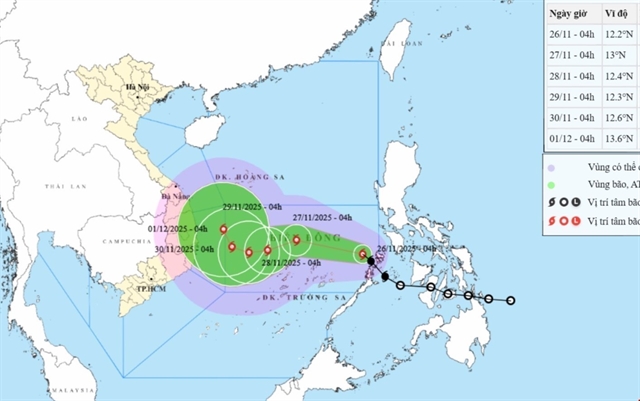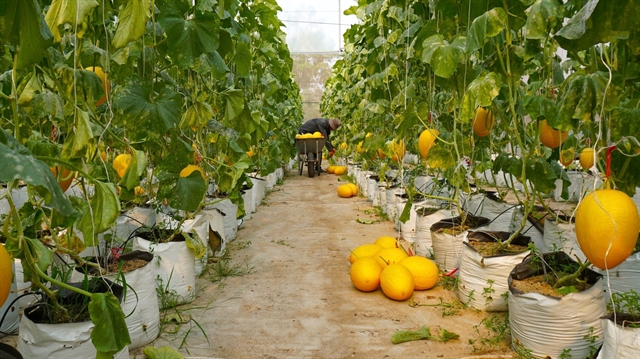 Society
Society

 |
| Harvesting honeydew melons grown with high-tech methods in a net house in Tây Ninh Province. – VNA/VNS Photo Minh Phú |
TÂY NINH – Tây Ninh Province aims for the agriculture, forestry and fisheries sector to grow at least 4.3 per cent this year, contributing to livelihoods and sustainable development.
Within this sector, agriculture is expected to rise by 4.26 per cent, fisheries by 5.95 per cent, and forestry by 1.68 per cent. These targets will help the province achieve overall GRDP growth of at least 9.3 per cent, according to Nguyễn Minh Lâm, deputy chairman of the province's People’s Committee.
“This is the foundation for Tây Ninh to aim for double-digit growth during 2026–30,” he said.
The southeast province has set detailed plans focusing on its areas of strength this year.
Rice output is targeted at over 4.13 million tonnes, with 70 per cent high-quality rice.
Output goals have also been set for cassava, rubber, dragon fruit, lime, durian, jackfruit, coconut and vegetables.
In livestock, annual production is projected at 279,600 tonnes of live meat, 84,000 tonnes of milk, 1.8 billion eggs, and 14 tonnes of bird’s nest.
Fisheries are expected to reach 174,800 tonnes, with 190 million fry produced.
Forestry targets include planting 1.8 million scattered trees and caring for more than 2,600ha of forest.
Lâm said the province is promoting technology transfer, especially high-tech and safe agriculture, while strengthening disease prevention.
It is also addressing challenges in rice production and trade, linked with the project “Sustainable Development of One Million Hectares of High-Quality, Low-Emission Rice Associated with Green Growth in the Mekong Delta by 2030” (the one-million-hectare rice project).
At the same time, it is expanding digital transformation, applying traceability, issuing growing area codes, promoting e-commerce, and developing “One Commune – One Product” (OCOP) goods associated with tourism.
In animal husbandry, the province is developing concentrated models, supporting bird’s nests farming for export, and improving disease control.
Fisheries include adjusting farming schedules, monitoring water quality, controlling fry quarantine and applying safe standards.
Forestry efforts focus on protection forests, scattered trees, and natural forest areas.
“With strong determination and comprehensive solutions, Tây Ninh expects to achieve its growth target this year, creating momentum for sustainable and modern agricultural development,” Lâm said.
The province achieved significant results in agricultural production in the first nine months of this year, according to the Department of Agriculture and Environment.
Rice output reached 3.35 million tonnes, with high-quality rice accounting for about 70 per cent. Several key crops produced well, including lime at 165,900 tonnes, dragon fruit at 161,500 tonnes, and durian at 38,000 tonnes.
Livestock remained stable, with more than 601,000 pigs, nearly 182,000 cows, over 10,000 buffaloes and about 23 million poultry. No major disease outbreaks were reported.
Forest cover was maintained at 86,244ha, with over 928,000 trees and nearly 51ha of new forest planted. The province now has 392 OCOP products.
However, challenges remain. These include falling farm produce prices, rising deforestation, and a shortage of commune-level staff after administrative mergers, making it difficult to implement national programmes.
Comprehensive solutions
To increase added value, Tây Ninh is promoting concentrated growing areas and expanding cooperative models linked to value chains under the one-million-hectare rice project.
The Department of Agriculture and Environment has identified key measures. These include protecting the autumn–winter and summer rice areas, directing winter–spring sowing for 2025–26, strengthening disease prevention in livestock and poultry, and monitoring slaughter, transport and traceability.
The province is expanding organic and circular farming, applying high technology, and strengthening linkages between businesses, cooperatives and farmer groups to secure stable markets.
To cope with climate change, market fluctuations and disease risks, many farmers are embracing new methods such as high-tech and organic farming.
Lê Minh Trung, director of Minh Trung Agricultural Service Cooperative in Tân Phú Commune, has grown custard apples for over 15 years. He switched to organic methods more than a year ago.
The cooperative has seven official members and works with over 100 households. It manages 100ha of custard apples producing 3,000 tonnes annually, certified under Vietnamese good agricultural practices. Another 500ha is grown under safe standards.
“Compared with traditional farming, organic custard apple cultivation significantly reduces input costs such as fertilisers and chemicals. Soil ecosystems recover visibly, and trees grow steadily with less reliance on growth stimulants,” Trung said.
The cooperative’s custard apples are produced under the geographical indication of “Bà Đen custard apple.”
Custard apples grown on Bà Đen Mountain are the province’s specialty, with favourable soil and weather creating fruit of exceptional flavour.
Tây Ninh is the country’s largest custard apple producer. – VNS




